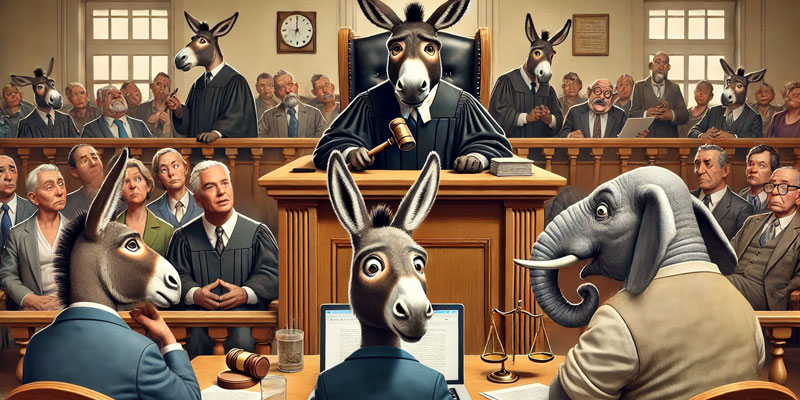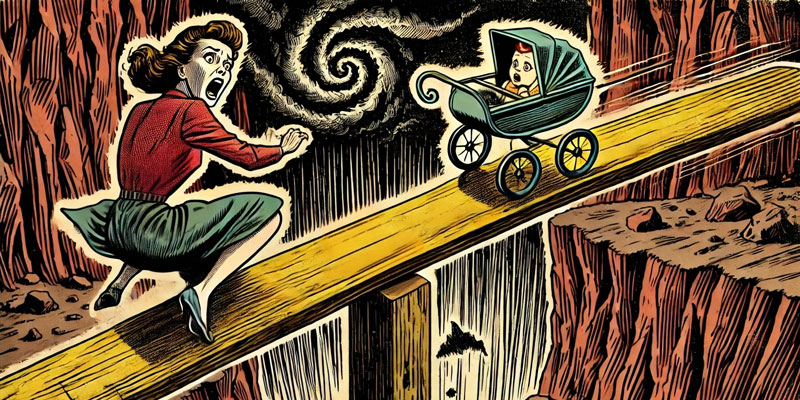On WNRI 1380 AM/95.1 FM, John DePetro and Justin Katz discuss:
- Magaziner runs from Stenhouse
- Amo called out
- McKee misses in D.C.
- Patinkin’s penance on transgenderism
- The narrative: starring fired fed workers
- RI versus doctors
Featured image by Justin Katz using Dall-E 40.
[Open full post]A widely applicable truism about organizations — whether businesses or public schools — that systems prioritize that which they measure. The folly of this principle came to mind while reviewing the Division of Statewide Planning’s still-new Social Equity Data Platform. What you see, there, is a map of Rhode Island with some shaded overlays of areas designated as the following, the names of which give a clear sense of the purpose:
- Justice40 Indicator
- ETC Disadvantaged Communities
- RI Environmental Justice Factors
- Health Equity Zone
- Narragansett Indian Tribe Reservation
The last is a genuine area of unique interest, but the first four are progressive marketing gimmicks to focus public policy on chosen constituencies. I say “gimmicks,” because one could nearly call them measures of urbanity. At least in the areas with which I’m familiar, there are no surprises, and the value of having precise boundaries isn’t clear.
What one doesn’t see are areas in which businesses are struggling. There’s no designation for high-tax areas. The map’s obvious intent is to help government planners visualize the areas of greatest opportunity for government services. The masters of the government plantation are using taxpayer dollars to better identify their real customers.
In this, we see the insidious methods of government planning. An organization has to plan toward something, and once the tracks are laid, they cannot easily be redirected. So, progressives design the future they want to see — one in which government and its satellites collect a healthy markup for the redistribution of wealth based on the need for government services — and then direct our shared resources toward actualizing their dreams.
This model is incompatible with both governance by the People and prosperity, which call for a smaller government tasked with setting the groundwork for broad flourishing. But there’s no profit for the plantation masters in truly being public servants.
Featured image by Justin Katz using Dall-E 3.
[Open full post]The fabricated nature of this tweet’s content is just one example:
To be sure, that isn’t the most egregious example I’ve come across, but I particularly wanted to capture a statement relegated to the very end of the article, coming from one of only two local sources cited for the article, William Worthy, of Big Bear Hunting & Fishing in Glocester:
[Open full post]“Maybe [Trump’s tariff policy] opens the door for some local people to have local-made bait instead of bait coming from other countries,” Worthy told 12 News. “I’d rather push the locally made stuff if I can’t buy the stuff from China anymore. I think it will create other opportunities.”
On WNRI 1380 AM/95.1 FM, John DePetro and Justin Katz discuss:
- McKee peddles J6 falsehoods
- RIGOP goals
- Mysterious Dem poll
- Teachers unions have it both ways
- Common Cause goes to the left side
- Sanchez DUI double-talk
- The courts’ hidden subtext on Trump restraining order
Featured image by Justin Katz using Dall-E 40.
[Open full post]At the risk of arriving late to the news cycle of a couple weeks ago on the hierarchies of love, I wanted to offer an adjustment to Matt Walsh’s perspective, with which I mostly agree:
The point is well taken that it’s easier to love “people” in the abstract than to love particular people (particularly when doing so leads one to advocate for things that one wants anyway). Nonetheless, if the term, “love,” means willing the good of the other, it is certainly available to both distant and aggregated people — the broader humanity. However, the closer a person is to environments that we can actually influence, this willing the good increasingly requires action.
Progressive policy is characterized by three qualities that bring the reality of their “love” into question:
- It is only marginally more specific (if at all) than the love that most well-meaning people will have for people they don’t know.
- It tends to impose obligations on people other than the progressives who claim to care so much.
- It implicitly imposes progressives’ beliefs about what is “good” on everybody else, including the constituencies they patronize.
Of course, for many progressives, we could add in the fourth characterization that the policies conspicuously benefit them in some way.
[Open full post]Jody Baldwin Stone of Rhode Island asks a question of huge importance to the Constitutional wellbeing of the United States of America:
RI Jurnos: Is it true that Judge McConnells daughter,
Catherine McConnell, was appointed by Biden and is currently employed by The Department of Education? Did the judges order save his daughter’s job?This is what is being reported.
To be clear, McConnell’s ruling relates to a pause on grants to states and other organizations. Changes to the Dept. of Education, meanwhile, appear so far to be limited to some external contracts and personnel hired before Ms. McConnell arrived in the agency. Thus, it might be more immediately relevant that Judge McConnell is on the board of Crossroads Rhode Island, which has received millions of dollars in grants and contracts from the federal government.
Nonetheless, further scrutiny of the DOE is expected, perhaps to the extent of effectively eliminating the department. If the two people are, indeed, father and daughter, therefore, Judge John J. McConnell risk of a Constitutional crisis would be in the vanguard of a push to tie the President’s hands in a way that directly benefits his own family.
Catherine McConnell’s LinkedIn page doesn’t make the familial connection, although it is certainly suggestive that her work record includes a year with Rhode Island’s Office of Postsecondary Commissioner and two years in the office of former Democrat Governor Gina Raimondo (who went on to be Commerce Secretary under Biden).
According to VoterRecords.com, Catherine Shea McConnell registered to vote in 2006, which is the same year the Dept. of Education Catherine departed for her undergraduate work at Brandeis, per LinkedIn. The website lists her address at the time in Providence and provides a link for “detailed records” placing her in Washington, D.C.
Zillow puts the same Providence house — covering two lots across two very desirable streets — at $3.3 million. The city’s valuation puts it at “only” $2.5 million and, oddly, lists the owner as “private,” protecting his identity by some unique process. (Neither immediate neighbor receives this courtesy, for instance.) Nonetheless, the city’s GIS tool identifies the property as owned by John J. McConnell Jr., which is the judge’s full name. I can also confirm from listings previously received from the RI Secretary of State that somebody of the judge’s name voted by mail in Rhode Island’s special election in 2023, as did an apparent spouse and son, both of whom include “Shea” in their email addresses. (All are Democrats, naturally.)
The address is also confirmed through state and federal campaign finance reports, including connecting Catherine with the address in 2021 and identifying the Postsecondary Commissioner as her employer. Searchable state records go back to 2002, and from that point through 2010, McConnells at the address donated $155,975 to Rhode Island Democrats. John, himself, appears to have stopped donating in March 2009, the month before Democrat Senator Jack Reed agreed to put him up for a judgeship under President Obama. He was nominated in May 2010 and appointed in May 2011.
The first result for John J. McConnell, Jr., donating federally was in 1993. From that point through 2010, members of the household donated $797,749 to Democrats. Conspicuous on the list are two donations totaling $38,500 made by John and his wife to the Democratic Senatorial and Congressional Campaign Committees in mid-2008.
So, the given evidence suggests that, yes, a Rhode Island judge did make an extremely high-profile and predictably controversial ruling that involved him in the operation of the executive branch of the federal government after a change election, and this action has immediate implications for his daughter’s employment by an executive agency known to be on the administration’s list for review. Emails sent to both people received no reply within two hours; I will update this post (and/or write additional posts) if that changes.
Regardless of the direct connection, however, these facts certainly contribute to the sense of the incestuous development of an aristocratic Democrat Party spreading wealth among connected partisans who take jobs from which they can implement policies and rulings that favor the party’s ideology and its self interests.
(As a small kicker, note that McConnell was also the judge who came to the rescue of the teachers union president in Tiverton, Amy Mullen, when the district tried to fire her. Note the “Resist” sticker on her laptop in the picture accompanying this related WJAR story.)
ADDENDUM (12:57 p.m. 11Feb2025):
Shortly after this post went live, I noticed that Catherine McConnell’s LinkedIn page now lists her as a “former senior policy advisor” for the DOE. It appears this change was made no earlier than yesterday, and if it had changed when I began writing this post this morning, I didn’t notice it.
[Open full post]On WNRI 1380 AM/95.1 FM, John DePetro and Justin Katz discuss:
- Congresspeople’s political street theater
- Warwick’s school construction cancellation
- Pretending Hasbro might stay
- McKee’s illusion of a reservation
- The phantom Proud Boys resurgence in Coventry
- Invisible mats under the Washington Bridge
Featured image by Justin Katz using Dall-E 40 and Photoshop AI.
[Open full post]A joint Oversight hearing about the Washington Bridge will be held this Thursday at the State House. [Agenda.]
There will be no public testimony and only committee members will ask questions. There is so far only one witness: Rhode Island Department of Transportation Director Peter Alviti.
The Director will not be under oath when he testifies.
Is that an issue? Well, when it comes to accuracy and veracity, Director Alviti has a bit of a mixed record.
Two instances in the last week.
On Monday, in the course of answering follow up questions by WPRO’s Tara Granahan, Director Alviti stated that Aetna Bridge was the low bidder on the overall demolition project of the westbound Washington Bridge. (J.R. Vinagro is a sub-contractor to Aetna.) In fact, Aetna’s bid was higher by almost $2,000,000. That’s before the $3,000,000 “early completion” incentive.
This is a significant misstatement by the Director on a basic but important point of information.
Second instance. Earlier that Monday morning, Director Alviti had called in to the WPRO Morning News with Gene Valicenti to address public concerns raised by videos of the demolition of a section of the Washington Bridge that had circulated.
In speaking with Valicenti, Director Alviti stated repeatedly that the demolition had been carried out in accordance with the demolition plan.
… the result was exactly what the plan called for.
More specifically, with regard to the two barges that were placed below to catch the debris (emphasis added),
… they had a timber armor on the decks of them and they also had explosive cushions on the deck to kind of cushion the impact of the falling beams when they were demolished. It did exactly that. If you look at the pictures on the plans that were approved, it shows the structure coming down in exactly the way the videos that someone took from the shore adjacent to the demolition the day it fell, the video showed that it fell exactly the way the plans had called for.
Also,
The equipment that was specified was exactly in the positions and doing the job and the proper type of equipment in accordance with the approved plans …
In short,
The execution went exactly according to plan.
Okay, about those cushions. I see them on RIDOT’s demolition plans; obtained by NBC 10 WJAR and part of the featured image of this article.
I do not see them on the barges as the demolition happens, per the screenshot in the featured image. I see only the timbers laid across the barges as Director Alviti referenced.
It appears that, contrary to the director’s assertion, the blasting mats were not in place when the demolition was carried out.
In light of this track record, layered on the backdrop of Governor McKee’s refusal so far to carry out a full investigation of what went wrong from the beginning with the Washington Bridge, it is not at all clear what will be accomplished at Thursday’s joint Oversight hearing — or, more to the point, if the public can have any confidence in the accuracy of anything stated during the hearing if the main witness is not under oath.
[Open full post]Charlie Kirk has an interesting business model. He goes where young adults congregate (presumably college campuses), sets up a booth, and has debates with whoever approaches his microphone. Then he posts the videos for clicks and (again, presumably) collects advertising revenue.
In this video, he stumps a young woman on the issue of abortion. Kirk’s states the position that abortion is never medically necessary, to which she replies by asking if he’s a doctor. He cites ob-gyns who agree with him, and she asks whose decision it is to make between these two camps. His redirect is to ask if a mother can kill a two-year-old child. When she replies, “no,” he asks if she’s a doctor. If she can have a moral position on infanticide, why does the child’s presence in the womb matter?
To be sure, Kirk is bobbing and weaving through some helpful ambiguities, here; while we’ll avoid the slippery act of articulating them, one could imagine circumstances in which we might morally and/or legally excuse a mother who kills her child. But the video is a helpful reminder that people don’t think through the principles on which they act and vote as well as they should. The obvious answer to Kirk’s deeper point is that the implicit use of the mother’s body creates a distinction at birth. Indeed, that distinction underlies some pro-lifers’ allowable exception for instances of rape (if they’re being principled and not just making political concessions). The mother did not consent to the act that created the baby, and her rapists cannot conscribe her to the carrying and delivery of the child.
While that distinction may allow a rhetorical resting point sufficient for political compromise, it doesn’t supply an end point. Regardless of the child’s parentage, most people agree (and stories of this sort sometimes reach public awareness) that the mother can’t simply throw him or her in a dumpster to die or abandon an older child deep in the woods. She has to make some provision for the child. That, too, is a forced use of her body. Of course, one could reply that this hypothetical imposes only a reasonable amount of effort, but as a generic proposition, childbirth could be described the same way, and in any event, the comparison is applicable for binary questions of rights and principle. If the decisive factor is denial of the mother’s control of her body, the same applies to a requirement that she take action.
If birth isn’t a decisive moment for the claims that a child can place on his or her mother, then what is? We could cycle through the development of this or that organ and system on one side of the big day or the development of consciousness on the other, but then we’d drift from the important observation for this post — namely, that people aren’t generally taking their positions because they’ve thought the questions through, fully. If they did, the issue would be a lot less polarizing, and a lot less useful for those who profit from division.
Featured image by Justin Katz using Dall-E 40.
[Open full post]On WNRI 1380 AM/95.1 FM, John DePetro and Justin Katz discuss:
- McKee and the union game
- Shekarchi’s millions
- Legislation to requiring resistance on immigration
- The radical state of the Democrat Party
- Education enrollment and results in RI
- The waning credibility of the partisan status quo
Featured image by Justin Katz using Dall-E 40 and Photoshop AI.
[Open full post]











